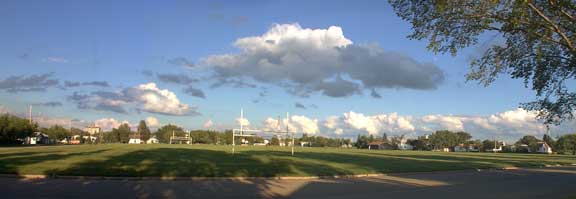| ----Fair Weather Cumulus |
 |
| FTLComm - Tisdale - July 12, 2000 |
| As you look out across the prairie landscape you can see about thirty-five miles
in all directions so that you field of view is a whapping seventy mile circle. But
this is a tiny window into the atmosphere that surrounds us and provides us with
what we like to discribe as "weather." However limited, this seventy mile
dome above us does offer even the most casual observer a huge amount of information
about what might occur, or in fact, is occurring. Water vapour in the air as it is altered by temperature and air speed can become visible and we call this stuff clouds. There are three basic cloud types. Cumulus, whick like those in this picture are puffs of water vapour in vertical shapes, horizonal formations of cloud are described as stratus and the third type of cloud is found high above us in thin wisps and these are called cirrus. All other formations are combinations of those three or have names that describe the clouds altitude. The primary realisation is that warm air expands and rises and cold air is dense and heavy. When you accept that reasoning you can begin to formulate rational explanations for what you observe especially when you recognise that air temperature decreases at a specific rate vertically so that you can see the point at which water vapour forms visible cloud is the dew point and the base line of a stratus layer is usually the point where the freezing level is established.. Below are some resources that you might find interesting to help you sort out the various cloud types and what you can expect from them. |
| Some Pages to check out: |
All about clouds |